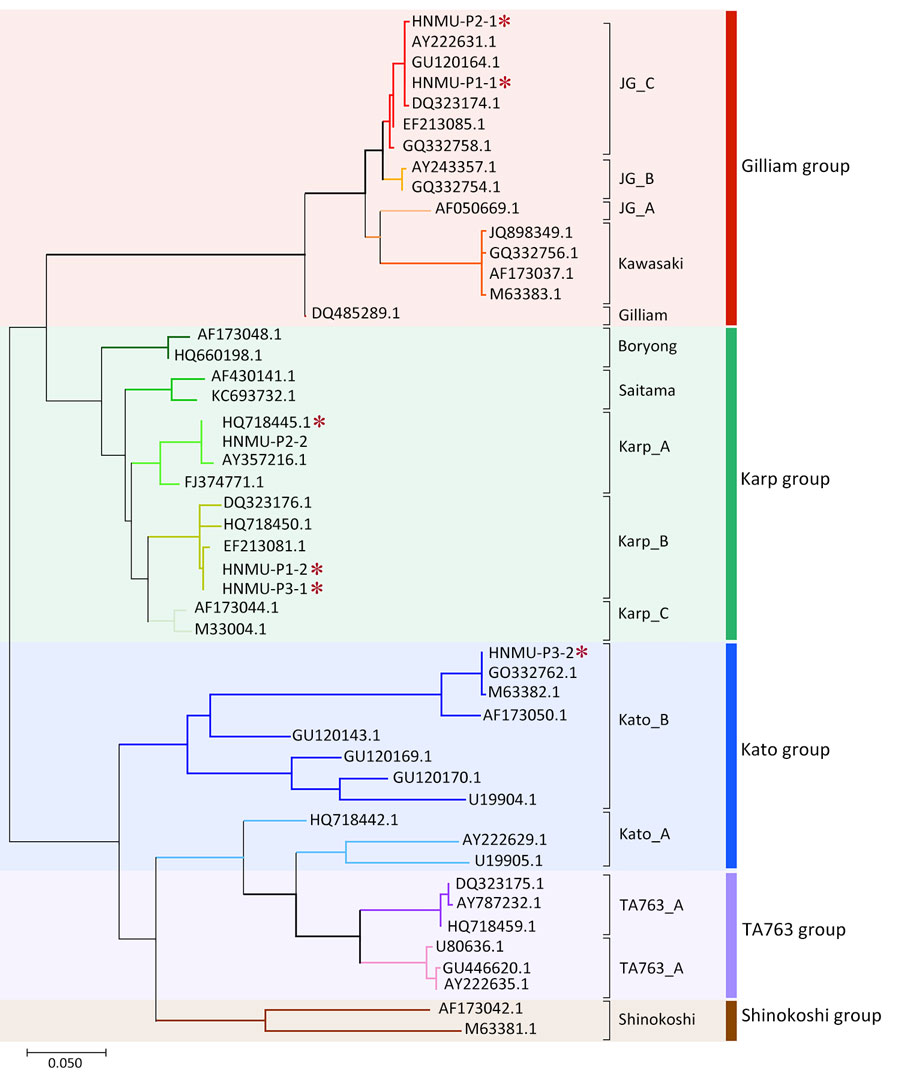Volume 31, Number 6—June 2025
Dispatch
Dual-Genotype Orientia tsutsugamushi Infections, Hainan Island, China, 2023
Figure

Figure. Phylogenetic analysis of Orientia tsutsugamushi based on partial 56-kDa type-specific antigen gene sequences from a study of dual-genotype O. tsutsugamushi infections, Hainan Island, China, 2023. Phylogenetic tree was constructed using partial gene sequences from whole blood samples of 3 patients with scrub typhus (red asterisks) and reference sequences representing dominant genotypes retrieved from GenBank (accession numbers indicated). We performed the analysis with MEGA X software (https://www.megasoftware.net) using the maximum-likelihood method and 1,000 bootstrap replicates. Color shading and vertical bars at right indicate genotypes.
1These authors contributed equally to this article.
2These authors contributed equally to this article and are co–senior authors.